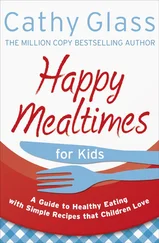Unfortunately, most doctors know very little about endometriosis. After all, isn’t pain the norm with the menstrual period? Suspicion of the diagnosis is really what’s needed to make a diagnosis. For more than forty-three hundred women reporting surgically diagnosed endometriosis who responded to a survey by the Endometriosis Association, the average time from the onset of symptoms until a woman sought medical attention was over four and a half years, and it took almost five years on average before the diagnosis was made. When symptoms started in adolescence, it took even longer before the correct diagnosis was made. And along the way, almost two-thirds of these women were told by one physician that nothing was wrong with them. Remarkably, 18 percent of women saw between five and nine physicians, and 5 percent saw ten or more physicians before endometriosis was diagnosed. Almost all of these women had pelvic pain and menstrual pain, and two-thirds experienced pain at ovulation.
Women often are totally accepting of having pain every month. But when is the pain not the norm?
Marci is a thirty-one-year-old lawyer who was referred to me for abdominal pain. For three months she had had an intermittent “pulling” pain deep in the pelvis, which seemed to come out of nowhere. This pain had grown more frequent, but she tried to ignore it—she had a frantic schedule, worked late all the time and just didn’t have time to deal with it. She was also constipated, with very infrequent pellet-shaped stools. She chalked this up to not eating regularly, scarfing down lunch at her desk and sometimes skipping dinner or doing takeout. Her most recent menstrual period, she told me, was more painful than normal. Her pelvic pain also had begun to shift to the left side of her abdomen. She’d been sent by her gynecologist for a pelvic ultrasound and vaginal ultrasound, where a probe was inserted into her vagina. The probe in the vagina reproduced the pain. A small cyst found on her right ovary—a common finding in a young woman, often due to follicle formation—was the only finding.
Her days followed a specific routine, centered around pain: Every morning she would wake up hoping that this would somehow be the day that she’d miraculously be pain free. But her relief would be short-lived. After an hour, once she was up and about, the pain would start and get progressively worse as the day wore on. The pain radiated down her left thigh and occasionally shot down her left leg, though her back was pain free. She even dreaded lying down to sleep, because she knew she’d only lie awake in pain. Her only other complaint was tiredness. But then again, who wouldn’t be tired given her lifestyle and lack of sleep? It was easy for her to make excuses.
Marci had suffered from colitis (an inflammation of the colon) five years ago, during law school, but a colonoscopy revealed that her colon had healed. She’d had a bout of appendicitis fifteen months ago, she told me, and her appendix was removed, which alleviated the sudden abdominal pain symptoms that she had at that time.
I reviewed her family history, and it was revealing: Her mother had endometriosis, and her mother’s aunt had endometriosis. A positive family history for endometriosis, especially in her mother, made me suspect that Marci had inherited it as well. (In fact, heredity plays a part in 18 percent of cases.) Plus, Marci was an only child, which made me think her mother had had a hard time getting pregnant due to her condition.
When Marci came to me, she was very distressed about her previous physician interactions.
“My gynecologist told me that I must be under stress since my affect was ‘flat,’” Marci said. “I told her that I was in quite a bit of pain and that it was definitely affecting my mood. She spent an hour asking me about the stress in my life, and then she told me I should go to a mind/body clinic! She said nothing was wrong with me.” Marci’s gynecologist brushed off her fears when Marci told her how hard it was for her to insert a tampon because of pain; her gynecologist also failed to biopsy her ovarian cyst. Clearly, by the time Marci reached my office, she was very frustrated—not to mention physically miserable.
My examination revealed only tenderness below the navel and on the left side of her belly. I examined her colon again by colonoscopy, and while I could see traces of her previous colitis, nothing could explain the pain that radiated down her leg. I also ordered an MRI for her spine, which was normal, and a pelvic MRI scan.
Once I got those results, I felt like we were getting somewhere: The pelvic MRI was abnormal, showing a small amount of free fluid in the pelvis and an area that suggested that there might be unexplained nodules. Her colon took some unusual sharp turns, which suggested that the colon could be stuck to adhesions (scar tissue). Adhesions are caused after surgery from inflammation (such as diverticulitis, “pouching” in the colon) or from the bleeding of the lesions of endometriosis. Taken together, my findings suggested the possibility of endometriosis.
The only way to be sure was to look in that area. This was done by a laparoscopy. (See above for a description of this procedure.) There it was—endometriosis with scar tissue, with involvement in her colon. Her lesions were cauterized (burned off), and she was started on Lupron (leuprolide) to reduce her estrogen levels.
Marci developed hot flashes due to a lack of estrogen. This was actually a good sign, as it meant there wasn’t enough estrogen to stimulate the endometriosis to grow back. (Menopausal women experience this all the time.)
However, estrogen can be protective, especially against osteoporosis (loss of calcium in the bones, which makes them brittle). Marci’s doctor thought that a low dose of estrogen could prevent osteoporosis without making her endometriosis rear its head yet again, as had been shown in studies. Therefore, her gynecologist prescribed an oral contraceptive pill. Unfortunately, within a week of starting the oral contraceptive, Marci began to suffer uterine bleeding. This was unexpected—Lupron should have stopped her periods entirely. (Marci’s treatment isn’t as strange as it might seem. Despite the fact that she did not have a period, her fertility wouldn’t be permanently affected; once she stopped Lupron, her proper menstrual cycle and, hence, her fertility would return.) Even though this bleeding was clearly out of the ordinary, Marci assumed all was well, and she continued on her treatment. (Think this is weird? It isn’t. I’ve had patients come to me after having ignored bleeding for years. Don’t make this mistake!)
After three months of treatment, the bleeding became constant, so heavy that Marci went through a tampon every hour. For two weeks she went through a box of tampons every day. Her pain also became progressively severe. It was impossible to ignore any longer. On the advice of her gynecologist, she stopped the oral contraceptive pill. The bleeding stopped within twenty-four hours. The pain lessened after a few weeks but then returned, shooting down her left leg. Ibuprofen didn’t help. The endometriosis was clearly back.
Now, five months after her first laparoscopy, an MRI scan showed a new lesion between her rectum and her spine on the left side. After she endured two months of exhaustion and increasing pain traveling down both legs, despite the Lupron, more laparoscopic surgery was considered.
She underwent another laparoscopy ten months after the first one, performed by a new gynecologist. Now she had endometriosis on the right ovary and additional endometriosis in her pelvis. Further evaluation showed new lesions in front of the spine and also between the rectum and bladder, which would certainly affect her bowels. She was told by the operating gynecologist that nothing else could be done for her—short of a hysterectomy with removal of the ovaries. At thirty-one, still hoping to start a family, she refused to accept this outcome.
Читать дальше












